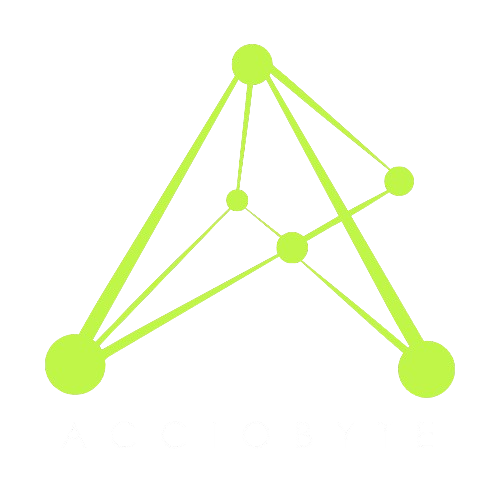















Web 3.0 - How Its Changing the Internet
Introduction: The Evolution of the Web
The internet has come a long way since its inception. From the early days of static web pages, often referred to as Web 1.0, to the rise of dynamic and interactive platforms under Web 2.0, the way we interact with the digital world has continuously evolved. Now, the emergence of Web 3.0 is revolutionizing the internet by introducing a decentralized, intelligent, and user-centric experience. Unlike its predecessors, Web 3.0 focuses on giving users greater control over their data, online interactions, and digital identity, fundamentally reshaping how the internet operates.
As businesses, developers, and consumers prepare for this new digital transformation, understanding Web 3.0s core concepts, benefits, real-world applications, and challenges is crucial. This blog will take a deep dive into how Web 3.0 is changing the internet and what it means for the future of online experiences.
What is Web 3.0?
Web 3.0, often referred to as the decentralized web, represents the next generation of the internet that integrates blockchain technology, artificial intelligence, and decentralized networks to create a more secure and user-empowered digital environment. Unlike Web 2.0, which is dominated by centralized platforms that control user data and content distribution, Web 3.0 aims to shift this control back to users by leveraging decentralized systems. By removing intermediaries, Web 3.0 allows for trustless interactions, making the internet more transparent, secure, and censorship-resistant.
The foundation of Web 3.0 relies on several key technologies, including blockchain, smart contracts, decentralized finance, tokenized digital assets, and self-sovereign identity. This new phase of the internet emphasizes interoperability between decentralized applications, greater privacy protection, and the use of artificial intelligence to enhance user experiences. It not only redefines how digital transactions occur but also introduces new ways for businesses and consumers to interact with online services.
The Core Principles of Web 3.0
Decentralization: Shifting Power from Centralized Entities
One of the most significant ways Web 3.0 is transforming the internet is through decentralization. In the current Web 2.0 model, tech giants such as Google, Facebook, and Amazon hold vast amounts of user data, allowing them to control access, monetize personal information, and dictate online interactions. Web 3.0 eliminates this reliance on centralized entities by distributing data across decentralized networks. This shift not only enhances security by reducing single points of failure but also empowers users to own and control their own data.
Blockchain Technology: The Backbone of Web 3.0
Blockchain technology plays a crucial role in securing Web 3.0 by enabling transparent and tamper-proof data storage. Transactions and interactions that occur on blockchain networks are recorded in an immutable ledger, preventing fraud, hacking, and unauthorized alterations. Smart contracts, self-executing programs that operate without intermediaries, further enhance security and automation in digital agreements, making online transactions more reliable and efficient.
AI and Machine Learning: Enhancing User Experiences
Artificial intelligence and machine learning further enhance Web 3.0 by enabling intelligent automation and personalized experiences. Unlike traditional algorithms that rely on centralized databases, AI in Web 3.0 operates in decentralized environments, ensuring data privacy while still providing accurate recommendations and contextual search results. This advancement paves the way for more intuitive voice assistants, smarter search engines, and AI-driven marketplaces that adapt to individual user preferences.
How Web 3.0 is Changing the Internet
Tokenization and the New Digital Economy
Web 3.0 is reshaping digital economies through tokenization. By utilizing cryptocurrencies and blockchain-based assets, users can participate in decentralized financial systems without traditional banks or third-party intermediaries. Decentralized Finance (DeFi) platforms allow individuals to lend, borrow, and trade assets in a permissionless manner, while play-to-earn gaming models and non-fungible tokens (NFTs) redefine how digital ownership and creative industries operate.
Privacy and Data Security in Web 3.0
Privacy and data security are additional factors driving the adoption of Web 3.0. With concerns about data breaches and online surveillance increasing, Web 3.0 introduces self-sovereign identity solutions that enable users to control their personal data without relying on external service providers. Cryptographic methods such as zero-knowledge proofs allow authentication without exposing sensitive information, ensuring both security and privacy in digital interactions.
Decentralized Social Media and Content Platforms
Web 3.0 is also changing the way people interact with social media. Decentralized social networks are emerging as alternatives to centralized platforms, enabling users to control their content, data, and monetization strategies without corporate interference. These platforms promote censorship resistance, privacy, and fair revenue distribution, addressing some of the major concerns associated with traditional social media networks.
Supply Chain Transparency with Blockchain
Supply chain management is another sector benefiting from Web 3.0 advancements. By leveraging blockchain technology, businesses can track goods from production to delivery with unprecedented transparency. This ensures authenticity, reduces fraud, and enhances efficiency in global trade and logistics. Companies like IBM Food Trust and VeChain are already implementing blockchain-based supply chain solutions to improve accountability and trust in the marketplace.
Challenges of Web 3.0 Adoption
Scalability Issues
Despite its transformative potential, Web 3.0 faces several challenges that must be addressed for widespread adoption. Scalability remains a major concern, as current blockchain networks struggle with high transaction costs and slow processing speeds. Solutions such as layer-2 scaling technologies, sharding, and cross-chain interoperability are being developed to enhance blockchain performance and enable mass adoption.
Complexity of User Adoption
Another obstacle is the complexity of decentralized applications. Many users find Web 3.0 platforms difficult to navigate compared to their Web 2.0 counterparts. To overcome this challenge, developers must focus on improving user interfaces, simplifying onboarding processes, and providing educational resources to help users transition to decentralized systems.
Regulatory and Legal Uncertainty
Regulatory uncertainty is also a significant factor affecting the growth of Web 3.0. Governments around the world are still establishing legal frameworks for blockchain, cryptocurrencies, and decentralized finance, creating challenges for businesses operating in this space. Transparent and compliant blockchain projects will play a crucial role in shaping regulations and fostering trust among users and regulatory bodies alike.
Security Concerns in Web 3.0
Security concerns, particularly related to smart contract vulnerabilities, also pose risks to Web 3.0 adoption. Hackers and malicious actors frequently target decentralized platforms, exploiting weaknesses in smart contracts and blockchain protocols. Regular security audits, robust governance models, and decentralized identity solutions will be essential in mitigating these risks and ensuring the stability of Web 3.0 ecosystems.
Conclusion: The Future of Web 3.0
Web 3.0 is fundamentally reshaping the internet by decentralizing control, enhancing security, and introducing new economic opportunities. As blockchain, artificial intelligence, and decentralized technologies continue to evolve, the internet will transition toward a more transparent, user-empowered, and efficient digital landscape. Businesses and developers that embrace Web 3.0 will be at the forefront of this transformation, leveraging its benefits to create innovative solutions and drive the next wave of technological advancement.
The future of Web 3.0 is bright, but it requires collaboration, education, and technological advancements to achieve mainstream adoption. As we move forward into this new era of the internet, staying informed and prepared for the decentralized revolution will be key to thriving in the digital world of tomorrow.
